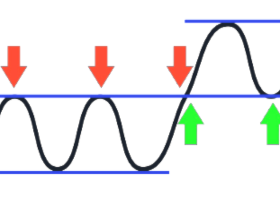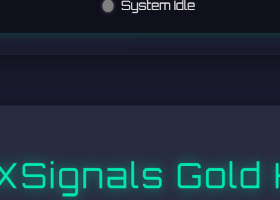
Click here for the product page
Technical Explanation
Mathematical Background of Scalping Strategy and Risk Management
The Exo Scalp EA is based on a scalping strategy that captures small price movements at high frequency.
From a mathematical standpoint, it is important to model price fluctuations probabilistically. Short-term price movements are sometimes said to behave like a random walk, but advantages can be found by taking into account statistical characteristics such as volatility and trends.
For example, by analyzing the distribution of price movements and estimating the mean and variance (standard deviation), it becomes possible to calculate the probability that the price will remain within a certain range and to determine the expected trading range.
Although each scalping trade carries small risk, the number of trades increases, so overall risk management is indispensable.
To keep the expected value positive, it is necessary to statistically manage the balance between win rate and profit/loss ratio (risk-reward ratio).
In general, if the profit/loss ratio (average profit ÷ average loss) exceeds 1, profits are more likely to accumulate, while if it is below 1, losses may exceed gains.
In this EA, stop loss/take profit settings based on ATR maintain a constant risk per trade while dynamically adjusting profit-taking and stop-loss ranges according to volatility.
Additionally, methods such as limiting the risk per trade to 1–2% of total capital are employed for position sizing, thereby incorporating risk management measures.
The Process by Which ChatGPT Analyzes Forex Data and Generates Signals
Large language models (GPT) like ChatGPT were originally trained to predict the next word in a text.
However, this “sequence prediction capability” can also be applied to time series data in general, and there have been attempts to feed price time series as text in order to have the model suggest “future direction” in sentence form.
Nevertheless, the generated text does not necessarily guarantee highly accurate numeric predictions.
In practical terms, it is considered desirable to adopt an approach of “AI + conventional methods in a hybrid form”, such as adding ChatGPT’s insights to EA rules or only allowing entries in situations where the model has high predictive probability.
Examples include using time-series Transformers specialized in numeric forecasting, but issues such as overfitting and market non-stationarity remain.
Details of Entry & Exit Logic
(SL/TP settings based on ATR, RSI filters, and spread management)
The entry conditions of the Exo Scalp EA are strictly defined based on technical indicators and market conditions. First, as a momentum indicator, RSI (Relative Strength Index) is used for filtering.
RSI calculates a value from 0 to 100 based on the balance of upward and downward price movements over a certain period, with readings above 70 indicating overbought and below 30 indicating oversold. It is calculated by the following formula:
RSI = 100 – 100 / (1 + RS) (RS = average upward movement / average downward movement)
In the EA, for instance, when RSI is 30 or below, it is considered “oversold,” and a buy entry aiming for a rebound is considered. Conversely, a buy entry can be permitted only when RSI exceeds 50 for trend-following logic, etc. It is possible to combine multiple judgment criteria.
Next, the ATR (Average True Range), a volatility indicator, is used to dynamically set profit targets (TP) and stop-loss levels (SL).
ATR indicates the average range of price movement in the market by smoothing the “true range” (the maximum range including comparison with the previous day’s closing price) over a certain period. Within the EA, settings like 1× ATR for take profit and 1.5× ATR for stop loss adjust SL/TP according to fluctuations. When volatility is high, SL/TP ranges become wider; when it is low, they become tighter—enabling consistent trades adapted to market conditions.
Furthermore, before executing an entry, the EA checks the spread to manage the impact of transaction costs on the strategy. Since scalping involves frequent trades, it aims to prevent high cumulative cost from wide spreads. If the current spread exceeds the allowable value, the EA skips new entries—for instance, refraining from trading when the spread exceeds 2.0 pips for major currency pairs is a key cost control feature.
//+------------------------------------------------------------------+ //| **Exo Scalp EA** Entry/Exit Logic Pseudocode Example | //+------------------------------------------------------------------+ void OnTick() { // Retrieve current price and spread double ask = SymbolInfoDouble(_Symbol, SYMBOL_ASK); double bid = SymbolInfoDouble(_Symbol, SYMBOL_BID); double point = _Point; double spread = (ask - bid) / point; // If spread exceeds the allowable limit, do not enter if(spread > MaxAllowableSpread) return; // Calculate technical indicators int atrPeriod = 14; double atr = iATR(_Symbol, PERIOD_CURRENT, atrPeriod, 1); // ATR (most recently completed bar) int rsiPeriod = 14; double rsi = iRSI(_Symbol, PERIOD_CURRENT, rsiPeriod, PRICE_CLOSE, 0); // RSI (latest value) //======================================== // Check entry conditions (Example: RSI <= 30 => "Buy") //======================================== if(rsi <= 30.0 /* Add other conditions if needed */) { double atrMultiplierSL = 1.5; double atrMultiplierTP = 1.0; // ATR × multiplier => convert to points double slPoints = (atr * atrMultiplierSL) / point; double tpPoints = (atr * atrMultiplierTP) / point; // Lot size (calculated based on risk management) double volume = /* Calculate lot size based on risk */ 0.01; // Example // For a buy, set SL below current price (BID) and TP above double slPrice = bid - slPoints * point; double tpPrice = bid + tpPoints * point; // Order trade.Buy(volume, _Symbol, ask, slPrice, tpPrice); } //======================================== // Example: If RSI >= 70 => "Sell" //======================================== if(rsi >= 70.0 /* Other conditions */) { double atrMultiplierSL = 1.5; double atrMultiplierTP = 1.0; // ATR × multiplier => convert to points double slPoints = (atr * atrMultiplierSL) / point; double tpPoints = (atr * atrMultiplierTP) / point; // Lot size (calculated based on risk management) double volume = /* Lot size calculation */ 0.01; // Example // For a sell, set SL above the current price (ASK) and TP below double slPrice = ask + slPoints * point; double tpPrice = ask - tpPoints * point; // Order trade.Sell(volume, _Symbol, bid, slPrice, tpPrice); } //======================================== // Other logic (e.g., trailing stop, etc.) //======================================== }
The above is a simplified pseudocode example of this EA’s logic. It performs trade decisions in a sequence of 1) Checking the spread, 2) Obtaining ATR, 3) Checking the RSI value, and 4) Dynamically computing SL/TP.
Incorporating an Academic Perspective
The Calculation Methods of Moving Averages and RSI, and Probabilistic Modeling
Technical indicators used in analysis each have a clear mathematical definition.
For instance, Moving Average (MA) is a simple method that takes the average of prices over the past N periods. It is widely utilized, for example, to judge buy and sell signals from the crossover of short-term and long-term lines.
Exponential Moving Average (EMA) gives more weight to the most recent prices, aiming to capture price fluctuations more quickly.
As explained above, RSI (Relative Strength Index) is an indicator that numerically represents the “relative strength of upward movement” over a certain period, based on average gains and average losses.
Using the average gain A and the average loss B over period n, RSI = A / (A + B) × 100% can also be represented. Continuous price rises tend to push RSI into the 70–80 range, and continued price falls often push RSI below 30.
Such extreme values are believed to indicate “overextensions,” thus providing the basis for mean reversion (contrarian) strategies.
All these technical indicators are deterministically computed from historical data, but there is a probabilistic view of price movements behind them.
For example, if the RSI is high, one could interpret it as “the probability of continuing upward movement is high,” or as “the probability of correction is high.” The modeling approach or market context makes a difference.
Classically, time-series analysis has employed ARIMA and GARCH models, but in recent years, approaches using machine learning and deep learning to forecast prices and volatility have become popular.
The Application of Statistical Methods and Machine Learning to Financial Data
Both statistical models and machine learning models have been used for forecasting financial data. For time series data forecasting, methods such as ARIMA/SARIMA, the Prophet model, or RNN and LSTM are employed. With breakthroughs in deep learning, highly accurate models have also been proposed.
This EA mainly uses conventional indicator-based methods, but there is growing interest in incorporating AI technology. For example, one might use ChatGPT as an auxiliary analyst, letting it generate textual interpretations of prices and news that are then integrated into the EA’s rules. This could enable a more flexible analysis, resembling discretionary trading by human traders. However, there also arises the new challenge of how much to trust the model’s “statements.”
How Neural Networks Are Applied to Scalping
One example of using deep learning for high-frequency, short-term trading is employing reinforcement learning to train a trading agent.
In particular, scalping, with many repetitive trades, can be a favorable training environment for such an agent to accumulate rewards.
On the other hand, numerous factors that cannot be fully explained by price alone—market structural shifts, economic indicators, geopolitical risks—are always in play, and it is difficult for a machine learning model alone to predict everything accurately.
Combining conventional technical indicators and risk management methods with AI is a practical approach that capitalizes on each aspect’s strengths and aims for stable performance.
Additional Explanation
Lastly, below is a simple table summarizing the key calculations and indicators used by the Exo Scalp EA.
By showing how ATR, RSI, spread, etc. are incorporated into the EA’s logic in a list format, it should be easier to grasp the concept.
| Element | Calculation Method / Meaning | Role within the EA |
|---|---|---|
| RSI (Relative Strength Index) | The percentage of upward movements is calculated from the average ups and downs over a certain period. A higher value indicates stronger upward pressure. | Used as a filter for entries. Extreme values (<30 or >70) serve as contrarian signals, etc. |
| ATR (Average True Range) | An exponential average of the true range (high-low, etc.) for each day over a certain period. A larger value indicates higher volatility. | Used to dynamically adjust take-profit and stop-loss. Multiplies ATR by a factor to set SL/TP in response to volatility. |
| Spread | The difference between Bid and Ask prices. Essentially, trading cost. | Basis for determining whether to enter. If spread exceeds the threshold, no orders are placed to reduce cost impact. |
| Moving Average (MA) | The average price over the past N periods (SMA is a simple average, EMA gives more weight to recent data). | Important in trend-following strategies. Not directly used in Exo Scalp EA, but widely used in many EAs for direction checks. |
| ChatGPT Analysis | Analysis and summarization of news or patterns by an AI model. Produces textual output to supplement human discretionary trading. | Used to assist discretionary trading, or integrated into EA’s rule-based logic to build an “AI + conventional methods hybrid.” |
Thus, RSI and ATR are quantitative indicators with clearly defined calculation processes, making them easy to directly incorporate into trading and risk management.
AI analysis such as ChatGPT holds the potential to unify more complex textual data and news factors, systematizing what has traditionally been human discretionary judgment.
Conclusion
In this comprehensive technical explanation of the “OpenAI Japan Exo Scalp EA,” we covered everything from the basics of a scalping strategy’s logic, to the mathematical background of technical indicators, as well as possibilities for applying AI and machine learning.
This EA adopts the classic yet solid approach using ATR and RSI while also leaving room for integrating the latest AI technologies.
No matter how sophisticated an algorithm is, it cannot eliminate market uncertainty entirely.
It is crucial to maintain risk management and to combine the strengths of statistically grounded methods and learning models in a balanced way.
In the future, one might build upon this EA by adding a dedicated price forecasting subsystem or a news analysis module, among other more advanced initiatives.
We hope this will help those who have purchased it achieve better Forex forecasts.
© 2025 AI Trader KYO(京)



